Introduction
Arriving on the heels of the DW-6000, the DW-8000 (and EX-8000 rack) offered several obvious improvements, including aftertouch and velocity sensitivity (routed to LFO depth, filter cut-off and amp level), twice the waveforms (16 vs. 8 in the DW-6000), digital delay (vs. DW-6000 chorus), multiple LFO waveforms (DW-6000 only had sine), a second unison mode, more polyphony (8 vs. 6 voices in the DW-6000), and auto-bend. However, I was curious whether the parameters common between the two models are really identical.
Waveforms
While the DW-8000 has twice the waveform memory, I wondered if all DW-6000 waveforms are included. Based on the manual pictures, the Brass looks similar, while the Violin looks very different. Acoustic and Electric Pianos look similar and Synth-Bass (DW-6000) looks like Digital Bass (DW-8000). Saxophone looks similar, but not identical, while Clavi and Bell do not even look similar. Luckily, we do not have to trust the manuals, since they can be sampled to find out ...
The DW6000 Brass is brighter than the DW8000 Brass. The DW8000 violin is brighter than the DW6000. The Acoustic and Electric Pianos sound (and look) the same. The DW-6000 SynBass is the same as the DW-8000 Digital Bass. The DW-6000 Sax is brighter than the DW-8000 sax, while the Clavi sounds completely different on each synth. The Bells sound similar, but look very different.
For completeness, I also compared the DWGS based harmonic synthesis preset waveforms in the DSM-1 to the DW-8000. Most were the same, other than name changes (Saw to Saw 1, Electric Piano to Electric Piano 1, Electric Piano Hard to Electric Piano 2, Violin to Saw 2, Acoustic Guitar to Saw 3, Distorted Guitar to Electric Guitar, Digital Bass to Synthesizer Bass, Bell to Metal). However, the Acoustic Piano and Brass sound significantly different (see pics). Specifically, the DSM-1 Acoustic Piano is brighter, while the Brass is similar to the DW-6000 Brass. Also, the "Metal" reverts to the DW-6000 "Bell and Gong", instead of using the DW-8000 "Bell".
| Waveform | DW-6000 | DW-8000 | DSM-1 |
|---|---|---|---|
| Brass | 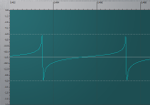 |
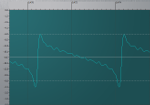 |
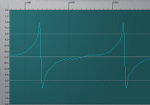 |
| Violin | 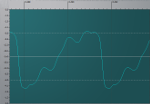 |
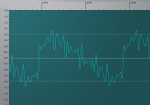 |
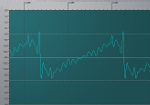 |
| Acoustic Piano | 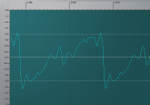 |
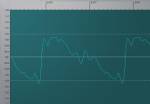 |
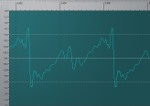 |
| Electric Piano | 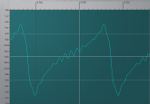 |
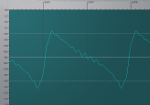
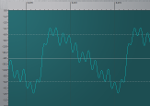 |
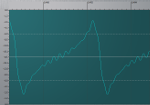
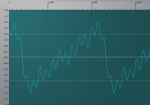 |
| Electric Bass | 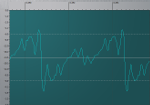 |
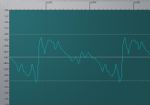
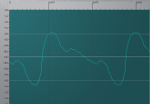 |
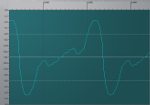
 |
| Sax | 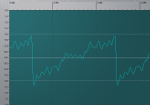 |
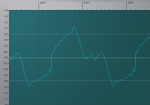 |
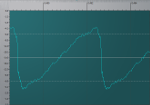 |
| Clavi | 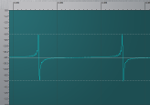 |
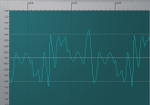 |
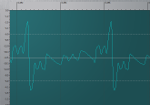 |
| Bell | 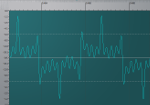 |
 |
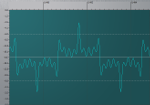 |
Envelope Generators
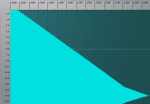
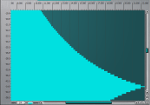
Both models have dedicated ADBSSR filter and amp envelope generators. While sustain levels are consistent, the attack rates are slightly longer for the DW-8000, topping out at 11.6s, while the DW-6000 tops out at 9.6s. Decay, Slope, and Release curves are very different, since they are piecewise linear (flatter slope is engaged toward the end) on the DW-6000, but exponential on the DW-8000. The DW-6000 decay is about half as long as the release or slope of the same setting. The DW-8000 full decay (no sustain) is the same as the release. Oddly, if a break point is set, the DW-8000 adds a sustain time (equal to the decay) after the decay is complete (before slope time starts), effectively doubling the time until the slope starts. BTW, the portamento range of the DW-8000 is about twice the DW-6000 (max 35s and 14.7s, respectively).
As mentioned in our previous article (Korg Digital/Analog Hybrid Synths), stair stepping, due to poor envelope DACs is shown in Korg's hybrid synths. However, the stair stepping is much less obvious in the DW-6000 (also note the linear slope change towards the end of the decay in the pic).
LFO
Besides the previously mentioned additional waveforms, the DW-8000 and DW-6000 LFOs have the same parameter resolution (31 step delay and frequency), but the ranges are quite different. The DW-6000 delay tops out at 5.15s, while the DW-8000 delay tops out at 7.04s, but the mid points are doubled (DW-6000:0.65s, DW-8000:1.27s). The DW-6000 LFO rate steps at about 10ms until the lower quarter of the range, when it starts jumping to reach 0.8s max. Whereas the DW-8000 LFO rate steps at about 30ms until the mid-point, when it then starts jumping to reach 7.1s max. So, the DW-6000 has fine control over fast settings, but not much range, while the DW-8000 sacrifices fine control for a much wider frequency range.
Filter
Yes, the DW-6000 uses the same filter as the DW-8000 (Korg proprietary 2069), but there was still some question on whether the cut-off level control was identical. In our tests, both DW models had the same filter control characteristics, although the EG and MG control are different (see previous topics).
Conclusion
While the filter is the same and the oscillators have some common waveforms, the parameter control stepping is different enough that it would not be trivial to convert a DW-6000 preset to an equivalent sounding DW-8000 preset. So, the DW-8000 is a superset of the DW-6000 in most respects, but the common parameters are not identical. Per our previous article (Korg Digital/Analog Hybrid Synths), see the DSS-1 and DSM-1 for a superset of the DW-8000.